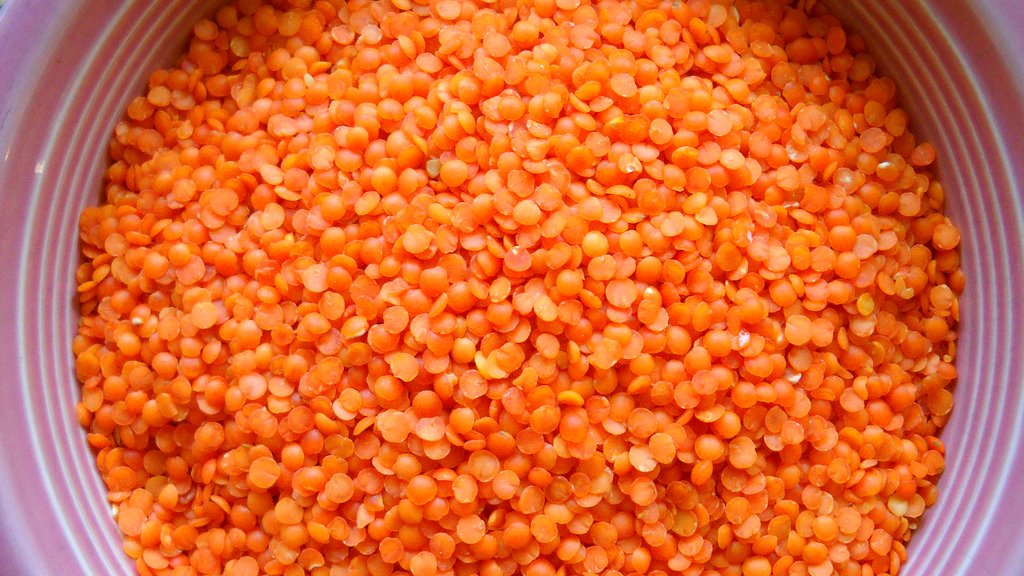Ed note. This is a special guest post from Deepti Pradhan, Senior Research Analyst in the Yale Office of Development, and a 2015 Public Voices Fellow at The Op-Ed Project.
Although the UN declared 2016 The International Year of Pulses, most people have no idea what a pulse is. These dried seeds are a subset within the legumes category and the most common varieties include dried peas, lentils, chickpeas, and dried beans. So why are they worthy of a year being dedicated to them?
Because pulses aren’t just good for you, they’re good for the planet.
Lentils and other pulses are some of the healthiest foods a person can consume.


A cup of cooked pulses such as lentils for example, provides almost a third of the USDA recommended daily protein and iron requirement; almost a tenth of the calories; and more than half the fiber. All this with less than 2% of the daily total fat requirement. In fact, in 2010 the US Dietary Guidelines for Americans recommended increasing the consumption of pulses because they are a rich source of protein, dietary fiber, many vitamins, minerals and phytochemicals.
Given how nutritious pulses are, it’s no surprise then that the consumption of pulses is correlated to a number of health benefits. There is substantial evidence indicating that an increased intake in the “vegetable group” – this includes pulses – is associated with a reduction in the risk of heart disease, diabetes, obesity, even tuberculosis and the flu. For example, because of the unique fiber content and composition of pulses versus that of a bagel, consuming equivalent amount of pulses prevents the spike in blood glucose that occurs when eating a bagel. Minimizing spikes in blood glucose is critical to managing satiety and therefore helps in controlling obesity.
Pulses are also an excellent source of iron. One portion of pulses provides 60% of the iron provided by one portion of beef, with none of the fat and cholesterol. This nutritional value of pulses underscores the need to increase them in our diets, particularly as we witness an increase in the burden of NCDs across the globe: 63% of 57 million deaths worldwide are a consequence of NCDs, and occur disproportionately in developing countries.
But wait, there’s more!


In developed and developing countries, pulses are an excellent source of fodder for livestock and are used for feed. In countries with relatively poor irrigation resources, pulses are also an attractive crop because they require relatively low amounts of water for cultivation. To produce one gram of edible protein, pulses consume only 19 liters of water. For an equivalent amount of protein from other typical protein sources such as egg, milk, chicken and beef, much larger quantities of water are required – 29, 31, 34, and 112 liters per gram of protein respectively. In fact, according to a recent report, because of predicted low rainfall in the coming months, farmers in Canada will most likely focus their efforts on growing pulses rather than their usual crops.
In addition to being water-efficient crops, pulses also have an unique symbiotic relationship with certain bacteria that colonize their root system; these bacteria have the ability to convert atmospheric nitrogen to a form that can be consumed by the plant through a process called the nitrogen fixation cycle. Consequently, pulses can be cultivated not only as a cash crop, but also to increase soil fertility by enriching soil with nitrogen. Farmers can then also use pulses in crop rotation resulting in better harvests of subsequent crops sown in the same soil.
To be sure, the global appetite for meat continues to increase, but this increased consumption is going to come at the price of significant adverse effects on global health and environmental degradation. Cultivating fodder for livestock consumes almost a quarter of all the water used for farming; and according to some estimates more than two-thirds of the antibiotics used on livestock are excreted without being used by the animal, posing a serious risk to public health. A gradual but concerted effort in introducing pulses in our diets won’t eliminate all of the adverse affects, but it’s a strong start.
Deepti Pradhan is a Senior Research Analyst in the Yale Office of Development, and a 2015 Public Voices Fellow at The Op-Ed Project.
